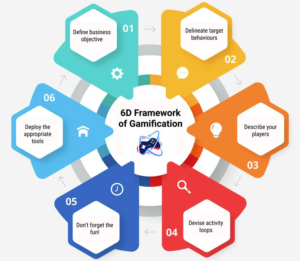
In today’s rapidly changing business environment, effective portfolio management is important for organizations of all sizes. This is especially true as technology drives much of the change we see. It’s important for every business to have a well-defined plan for how they will approach and benefit from a change. By properly managing their portfolio, businesses can ensure that they are well-equipped to navigate the challenges and opportunities of an ever-changing landscape.
As organizations emerge from the COVID-19 pandemic, many are faced with a backlog of change initiatives that need to be prioritized and implemented. It’s important for these organizations to carefully consider which initiatives will have the greatest impact and which ones should not be pursued. It’s also important to reflect on past change efforts and identify any initiatives that should not have been started in the first place. By carefully evaluating and selecting the most impactful change initiatives, organizations can optimize their resources and increase their chances of success.
Despite its importance, portfolio management is often not well-established or integrated with project and program management within organizations. This is especially true for best practices approaches such as MoP. As a result, many organizations may not be effectively managing their portfolio of initiatives and maximizing the impact of their efforts.
Why Portfolio Management?
An organization’s portfolio represents all the change initiatives it is undertaking or considering. To effectively manage this portfolio, it’s important to have clear criteria for evaluating and selecting the most impactful initiatives. This involves making trade-offs between competing projects and programs, as organizations typically have limited resources and cannot pursue every desirable change. By carefully considering the relative value of different initiatives, organizations can make informed decisions about which ones to prioritize and which ones to set aside.
It’s common for organizations to be skilled at executing individual projects and programs, but less adept at making informed decisions about which initiatives to pursue. This can be due to a variety of factors, such as senior managers pushing their own “pet projects” or a tendency to view all ideas as potentially viable. In a resource-constrained environment, it’s important to be realistic about the costs and benefits of different initiatives.
However, it’s usually the case that project proposers overestimate the potential benefits and underestimate the costs of a project, a phenomenon known as optimism bias. This can lead to a situation where the portfolio of initiatives becomes more like a “tunnel” with a narrow focus, rather than a “funnel” that allows for a wider range of possibilities. To effectively manage their portfolio, organizations need to be mindful of this bias and take a more strategic approach to decision-making.
Effective portfolio management involves establishing clear criteria for evaluating and selecting initiatives that align with the organization’s overall goals and needs. These criteria should be used to determine which initiatives are worthy of further consideration, rather than focusing solely on the feasibility of individual projects and programs. Once a change initiative has been identified as a candidate for the portfolio, it still needs to be prioritized and carefully planned before it can be implemented. By approaching portfolio management in this way, organizations can ensure that they are making informed decisions about which initiatives to pursue and that they can effectively execute the chosen projects and programs.
The Risks of Choosing the Wrong Type of Portfolio
Effective portfolio management helps organizations realize the full potential of their change initiatives by aligning them with strategic objectives and maximizing the benefits they deliver.
Without proper portfolio management, it’s possible for organizations to pursue projects and programs that lack a clear connection to their goals or that are unlikely to deliver meaningful benefits. This can result in wasted resources and missed opportunities to allocate those resources to more impactful initiatives. In short, portfolio management helps organizations to avoid the “double-whammy” of delivering unnecessary or low-value projects at the expense of higher-impact initiatives.
The Value of Best Practice Approaches – MoP
Before any change initiative is considered for inclusion in the portfolio, it’s important to thoroughly evaluate its viability and feasibility. This includes scrutinizing the business case to ensure that the project or program is likely to deliver the intended benefits and can be successfully executed.
Best practice portfolio management involves ongoing assessment and reassessment of initiatives to ensure that they remain viable and are aligned with the organization’s goals. It also helps to free up resources by eliminating initiatives that are no longer viable or necessary, and by making holistic decisions about the allocation of resources rather than focusing on individual projects or programs in isolation. By taking this approach, organizations can optimize their use of resources and increase the chances of success for their change initiatives.
The moP is a best practice approach that helps organizations prioritize their investment in change and ensure that they are able to successfully deliver initiatives and realize the full benefits of those efforts. According to the guidance on MoP, the goal is to “do the right things” by selecting initiatives that align with strategic objectives and maximizing their impact. In contrast, PRINCE2 and Managing Successful Programmes (MSP) are focused on “doing things right” by effectively managing the execution of individual projects and programs.
The guidance on the MoP is designed to be easy to understand and highly practical, with techniques and case studies that practitioners can use immediately. The portfolio definition cycle in MoP is particularly useful for tailoring portfolio management to the specific needs of an organization.
It includes detailed explanations on how to calculate ROI and other approaches for evaluating change initiatives. These practical approaches make it easier for organizations to effectively manage their portfolio and make informed decisions about which initiatives to pursue.
One of the key concepts emphasized in the guidance on the MoP is organizational energy, which refers to an organization’s ability to mobilize its emotional, cognitive, and behavioral resources to pursue its goals. By focusing on organizational energy, organizations can increase their chances of success and improve their ability to manage their portfolio of change initiatives effectively.
Who is MoP for?
The people working at a senior level, such as portfolio directors, heads of departments or divisions, and other directors, are typically the ones who can gain the most value from learning about the principles of portfolio management as outlined in the guidance on MoP. This is because they have the ability to influence the overall direction of the organization and ensure that the energy and focus on portfolio management are effectively communicated and embraced throughout the organization. By adopting best practices in portfolio management, senior leaders can help to optimize the allocation of resources and increase the chances of success for the organization’s change initiatives.
While MoP is primarily intended for senior leaders, it can also be valuable for project and program managers who are looking to advance their careers. Having previous experience in running projects and programs can be helpful for those who are responsible for managing portfolios, as it allows them to make informed and efficient decisions based on their understanding of these types of initiatives.
MoP can help organizations deploy change in a way that is most effective and aligned with their overall strategic direction.
Here at CourseMonster, we know how hard it may be to find the right time and funds for training. We provide effective training programs that enable you to select the training option that best meets the demands of your company.
For more information, please get in touch with one of our course advisers today or contact us at training@coursemonster.com




 Image courtesy of Euan Wu
Image courtesy of Euan Wu


